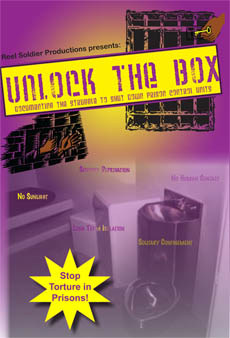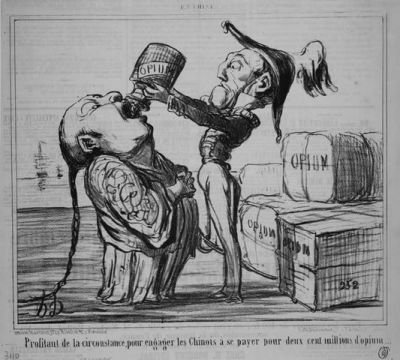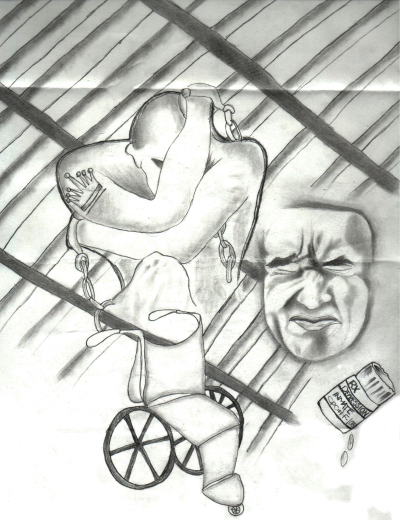
COVID-19 Used to Enhance Social Control in Maryland
Sisters and Brothers, i raise my clenched fist and salute all of you striving to stay strong through these adverse times. i am a New Afrikan man currently incarcerated at Maryland’s E.C.I. koncentration kamp. Due to COVID-19, there have been a lot of changes here.
Lockdown
We are supposed to be locked in 23 hours a day and out one hour, but the actual scheduling is 35 hours in, and one out, meaning we go out once every other day.
The scheduling causes brothers to come out at nine in the morning to shower, call loved ones etc, then sit in the cell until nine the next night. Some brothers have nothing – no T.V. or radio. All they have is the mental voice and that isn’t always kind to brothers behind the wall with no information about the future. We are given yard time two times a week, if suitable for our korrectional oppressors. Our yard time length is fifteen to twenty minutes, and we can’t use weights or any other yard equipment. They claim they are giving us 30 minutes, but brothers with timers on their watches have disproven this. When we show the korrectional oppressors our timers, we are told ‘it is what it is’ while they make a show of having their hand on the Mace canister.
We get visitation once a week, where we can Skype approved loved ones. We are brought a sheet weekly where we sign up for a time slot during which we wish the conversation to take place. They try one email choice two times, if no one responds you are sent back to your designated building. This causes issues – not for the korrectional oppressors, but for us. Most brothers strategically choose their times when loved ones won’t be working, and children won’t be online doing schooling, etc., but at times they call you for your call two hours ahead of your scheduled time and no one is there to pick up. Brothers have raised grievances about this and given political responses. Even if you do get through on Skype, the connection is poor, and noise in the visitation room can cause mics to cancel each other out – sometimes when your loved ones speak Skype mutes them, thinking that the noise in the room is you speaking.
Our food is now brought to our cells. For breakfast we get one cereal and two slices of bread. For lunch and dinner we are brought takeout containers that have sat in the foyer until they are cold. Often everything is mixed together and not fully cooked.
Most brothers now sit idle with no school or self-help programs/groups. As i watch my brothers, it grips my heart to see how this pandemic and the uncertainty of the future is causing brothers to slide back from the growth they were making. i have been doing my part by creating community building topics and self-reflective exercises, though i can only reach so many.
Inside Maryland Correctional Enterprises
One big change at this kamp has been at M.C.E. (Maryland Correctional Enterprises) Plant #106, where I work doing furniture restoration and refurbishment for the MTA, schools, colleges, prisons and other state institutions. During the pandemic, in addition to our other tasks, we make face shields and masks which go firstly to for ‘essential’ workers – $tate workers, korrectional oppressors, and secondly to our sisters and brothers behind the wall. Brothers were acknowledged by the $tate’s Governor ‘Lyin’ Larry Hogan in multiple newspapers for our hard work with a picture of him wearing a mask made by us. Within two weeks after the article praising us, brothers were given a memo stating that there would be layoffs from the plant, and that those who weren’t laid off would not receive base pay when they are not scheduled to work. The managers at plant #106 laid off 25 workers that week. As of the 6th of November, they laid off 29 more brothers, leaving them high and dry after working hard for relief on their sentence and pay.
Plant #106 is the lowest paid plant in the $tate. Our base pay is 35 cents an hour. Other plants around the $tate’s kamps clear $100 checks on the regular (i should say, i am truly happy for my brothers and sisters behind the wall making money to support their family and themselves). Our low pay is due to the Plant #106 manager Dan McGarity and regional plant manager/supervisor Matt Hall setting the pay we receive per job, which has gotten lower and lower. For example, we used to receive four dollars per bus seat. Now, we receive one dollar for the same work, even though the job estimate given and accepted by the MTA is the same. So why are brothers now receiving three dollars less in our incentive pay (incentive pay is a flat daily pay added to out base pay if we worked, if you don’t work you used to just receive base pay)? Brothers who work nearest to Dan McGarity as office clerks say that when McGarity is speaking with his peers, he has stated that he doesn’t want to be audited or have anyone look too deeply at the books. i find it no coincidence that brother’s base pay was taken away due to ‘lack of work,’ which was not true. On the east side kompound, here at E.C.I., their plant is still receiving base pay. When brothers inquired as to why east side plant was receiving base pay and we were not, we were given the runaround. Brothers were told our regional manager/supervisor is different (which makes no sense, we are one kompound split by a wire). Brothers were told we were not considered essential, after Governor ‘Lyin’ Larry Hogan told multiple newspapers that we were.
Korruption and Resistance
E.C.I. is known amongst the brothers for its korruption. In 2015, former warden Kathleen Green was let go from her job for pocketing grant money meant for programs in the prison. We are frequently punished for the negligence of those paid to do their jobs. This has caused a divide among the population. This koncentration kamp gets more restrictive and oppressive every couple of months, with constant rank changes and rule changes. We’ve had to coordinate multiple peaceful protests, just to receive our basic rights.
For example, in 2018 the brothers had decided we had enough of being locked down weekly for random, unjust reasons, losing yard access because the guards didn’t feel like allowing it, food being uncooked, verbal and physical abuse, and other issues. We had planned a mass sit-in at east and west side kompound, brothers were not to go to school, work groups, or to chow. Kapitalist industries hate when money is wasted and not made. Unfortunately, due to korrectional pets/sympathizers, our plan was sent into a state of confusion. The korrectional oppressors used one of their pets to spread word that the day of the protest had changed (which was false information). At this time i was housed on a different tier in the same building. The confusion tactic, sadly, worked. Brothers on the east side kompound had a major sit-in, refusing to go back in their cells. Some of the brothers who worked for M.C.E. Plant #106 at that time didn’t go to work. The protest caught the korrectional oppressors attention, though due to the coordination being disrupted, the effect was not powerful enough.
The east and west side kompound was put on complete lockdown for four months that summer. Brothers were given sweaty lunch meat brown bags for breakfast, lunch, and dinner. No showers, visits, phone, just straight twenty-four hour lockdown until we entered step down phase. The local media had caught wind of the lockdown, through an unknown brother that had his people inform them on the injustices taking place in the prison (this was before the protest was to take place). The first newscast on the kamp’s lockdown spoke on the injustices that brothers were exposed to, and how it was a peaceful protest. The next newscast later that evening flipped and spoke on the “plight” of korrectional oppressors, showed images of oppressor’s family members out front the kamp holding signs. The signs claimed korrectional oppressors were overworked, etc. In most simple terms, we were forgot about and villainized for the rest of the news coverage, which went on for months. That 2018 situation seemed to be what broke some brother’s mindset, causing them to become submissive and just look out for self. Even though some brothers became more cooperative with injustice, it only gave fuel to the korrectional oppressors to become more oppressive and the line of division among brothers continued to widen. For the brothers who refused to go to work at Plant #106 on the day of ‘protest’ were fired. Plant #106 oppressors used this to their advantage to help the koncentration kamp by offering jobs back in exchange for information. Brothers at this kamp have an extreme lack of unity.
The ACLU came out here about two years ago and told the prison to double our food ration. The prison followed orders for a week, then went right back to the portion they been serving. When brothers were asked to raise their voice, most were afraid of having their cell tore up and going to lockup for whatever reason korrectional oppressors chose. During audit time here at the kamp, the korrectional officers turn into masters of deception. They do a mass clean, plant flowers (that come up right after the auditors leave) – in simple terms, the put on their ‘Sunday best.’ They only send oppressor’s pet to talk to auditors. Once auditors leave, it is oppression as usual. Any advice?
Some of these brothers that work at Plant #106 slave to get jobs done, only to be taken off the schedule while the oppressor’s pets are left on the schedule to collect incentive pay they just watched others generate. The brothers who deserve that money, need that money to get by in prison. The injustice at this kamp is real.
Update: as of November 3rd our kompound was put on lockdown due to a spreading of COVID-19. We are out our cell individually for fiteen minutes a day. This outbreak was due to the kapitalist mentality. While COVID-19 cases were down amongst Maryland’s koncentration kamps, brothers who were supposed to go to the minimum kamp were finally shipped out, taking the population way down. This, in turn, meant that this kamp would not receive as much money, so this kamp made moves to get a busload of brothers from another kamp. These brothers were not tested or given quarantine time. They were just placed in cells. Then began the COVID-19 outbreak. On my tier they let out one of their pets to do laundry and pass out meals, only to find out the brother has been infected by the virus and told no one! Brother had to put him on blast to get him to admit he had symptoms. This is crazy – our safety depends on those in charge. Sisters and brothers lives are in the korrectional oppressors hand’s and they could care less about us. Their concern is ca$h. My sisters and brothers outside and behind the wall, i urge you to do your part in the fight against the machine. We all have a part to play in Vita Wa Watu. If we don’t care for each other, then who will care for us? Keep up the good fight comrades – and much love to those who work hard at M.I.M. to educate our brothers and sisters in the struggle. Any advice or resources welcome.









